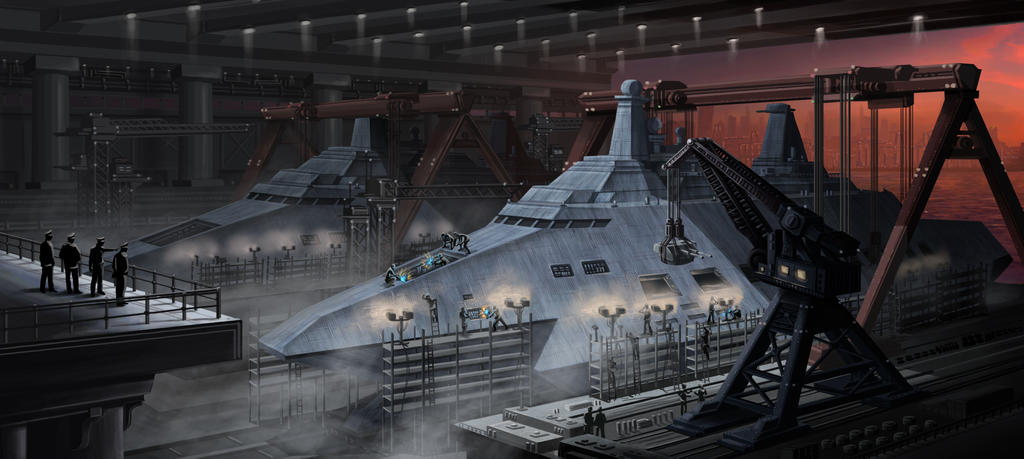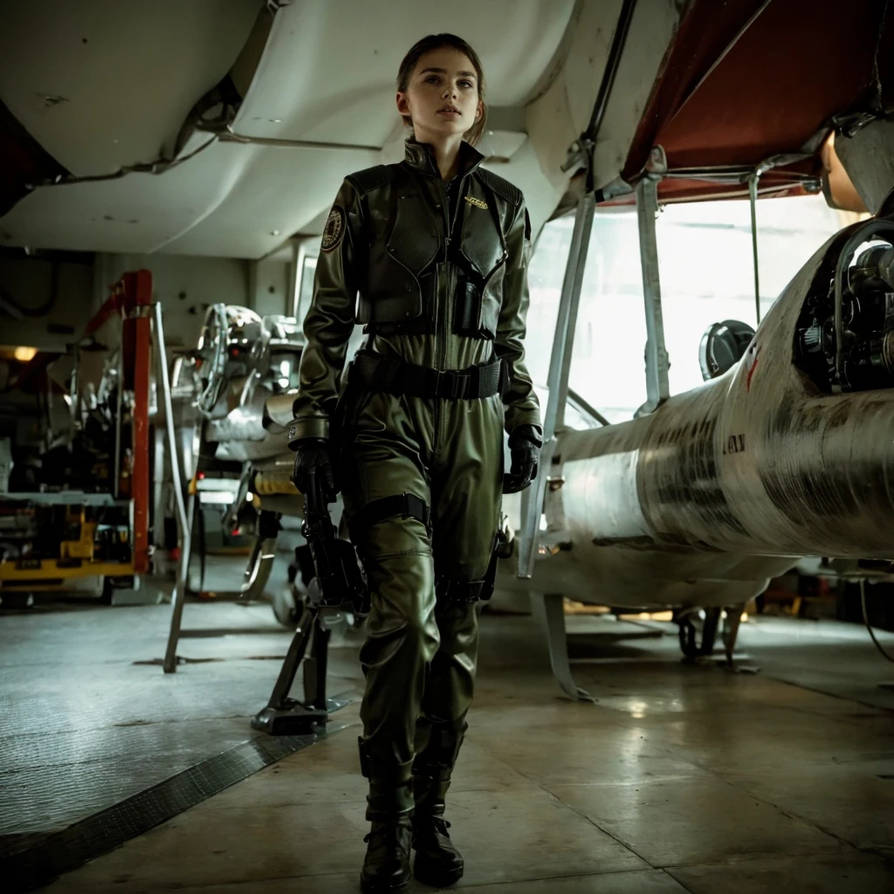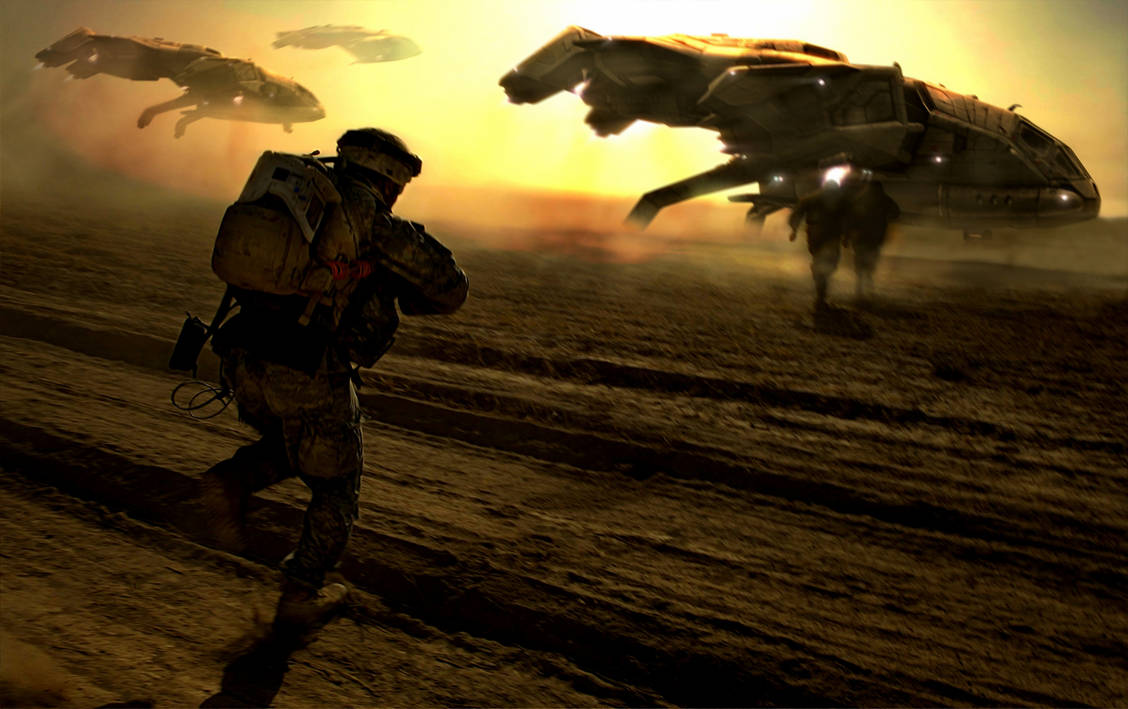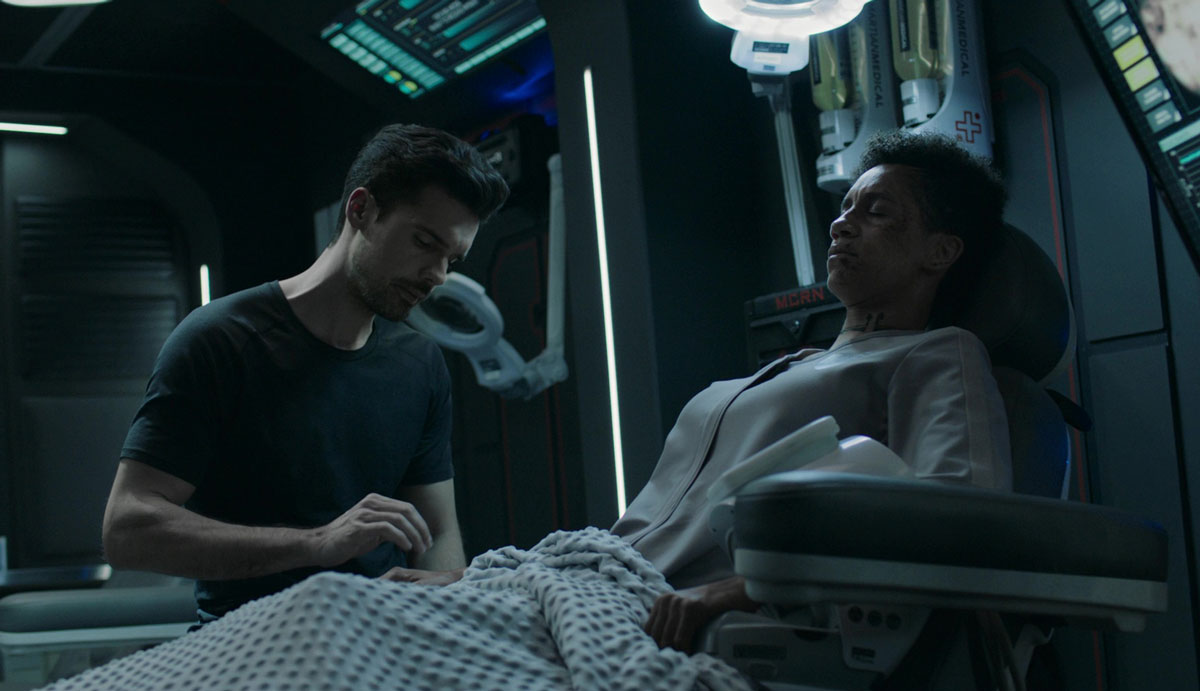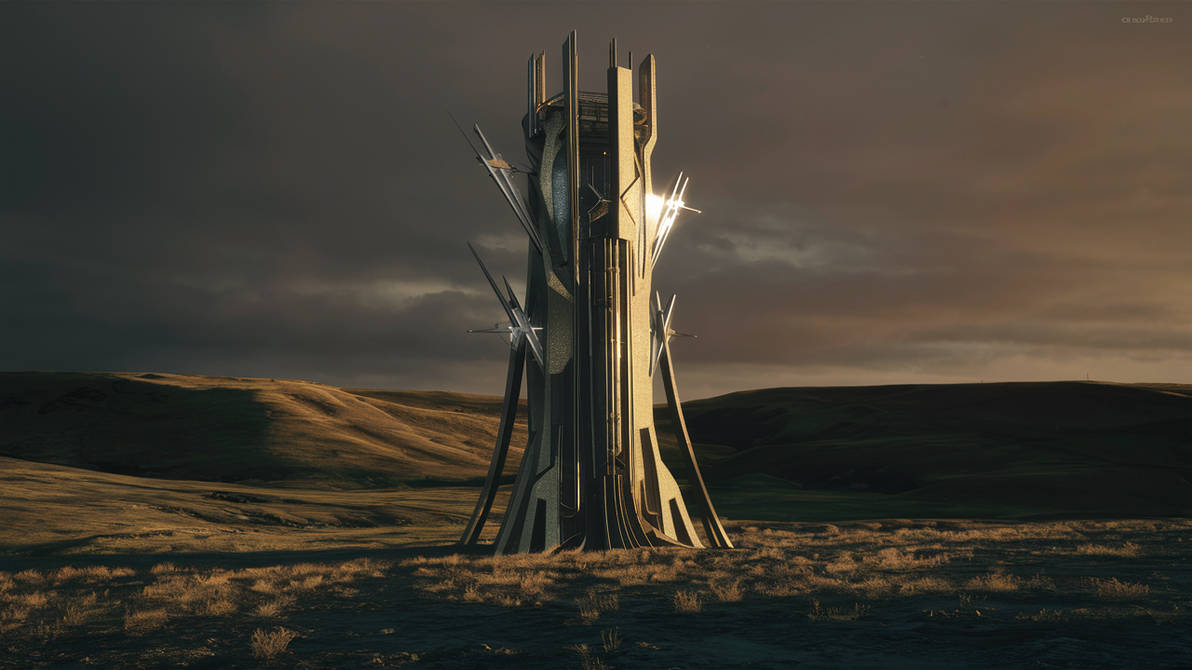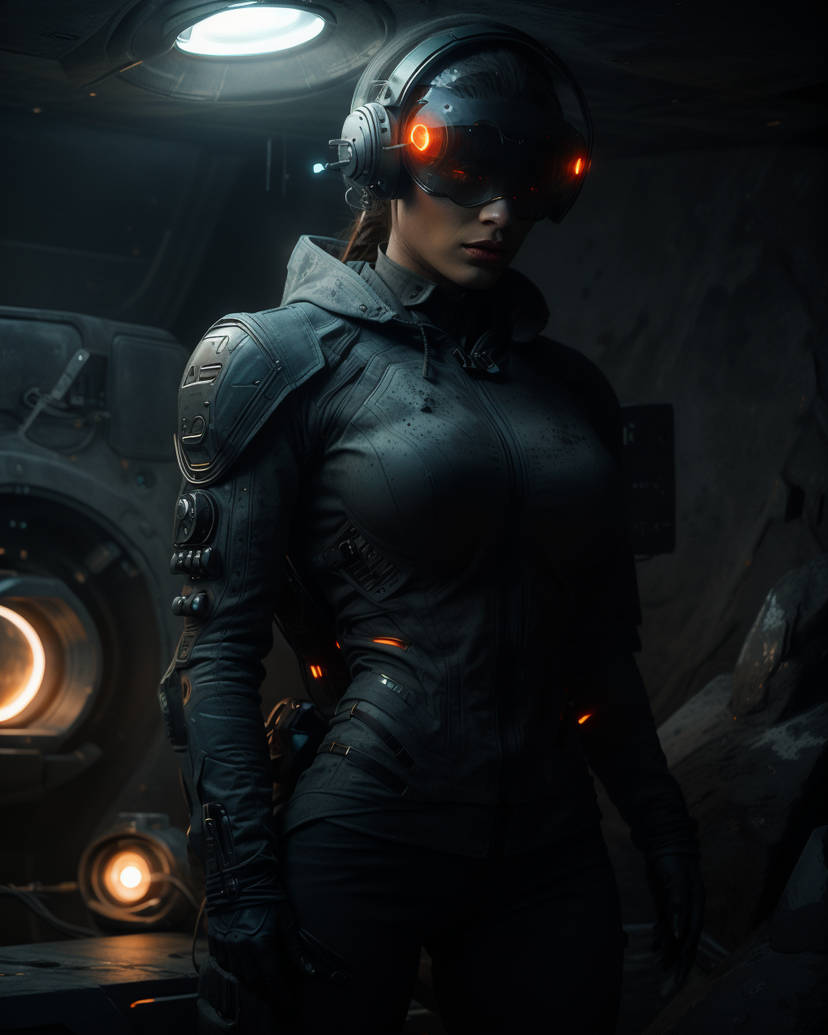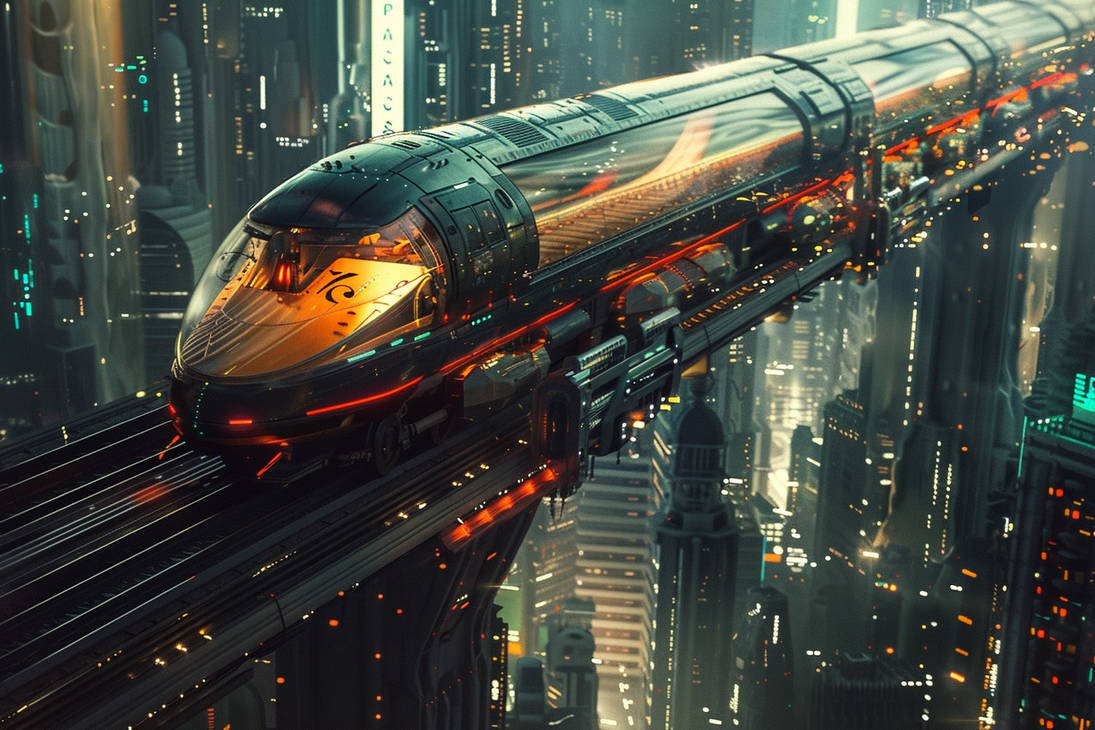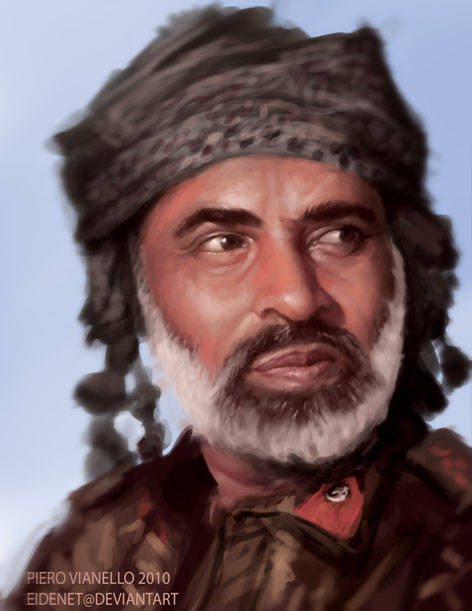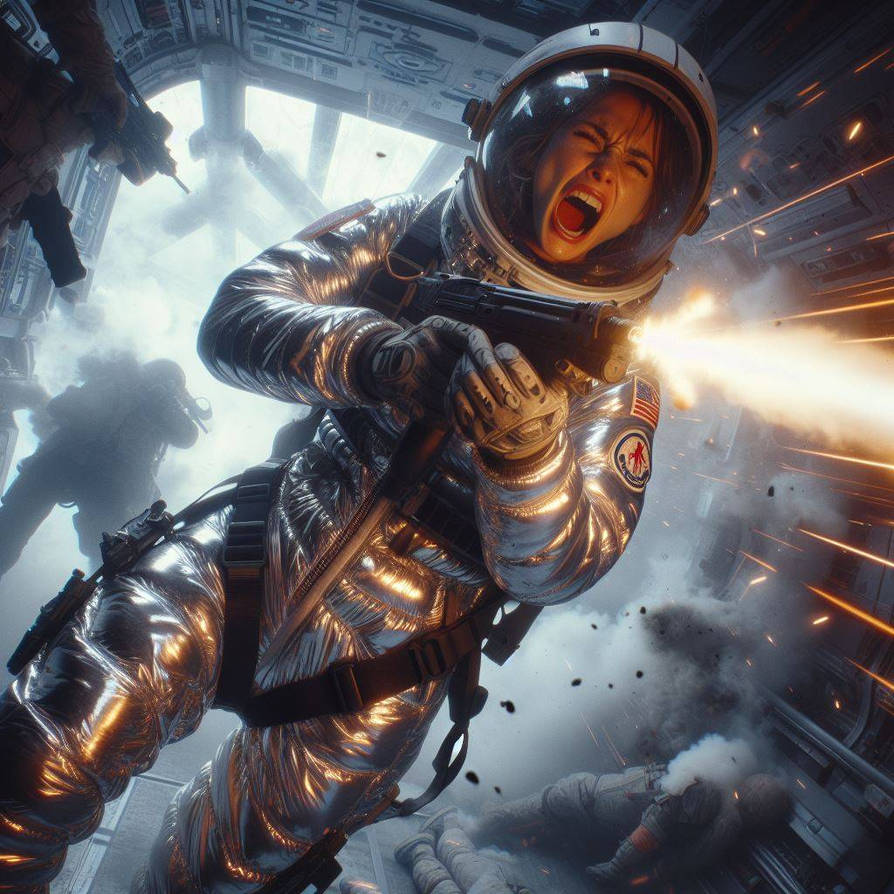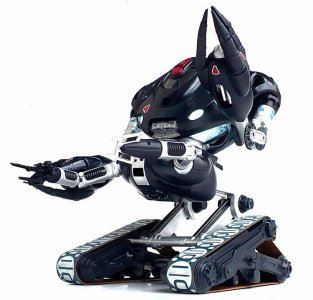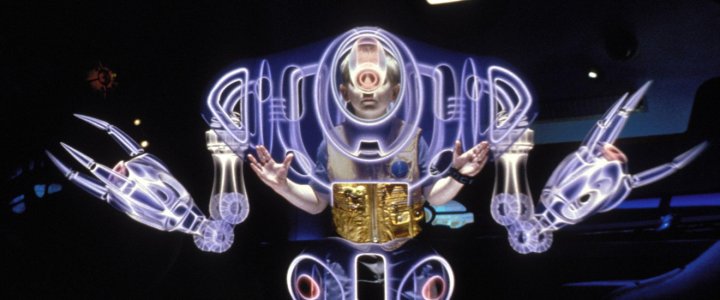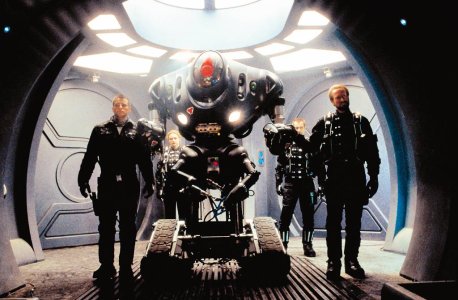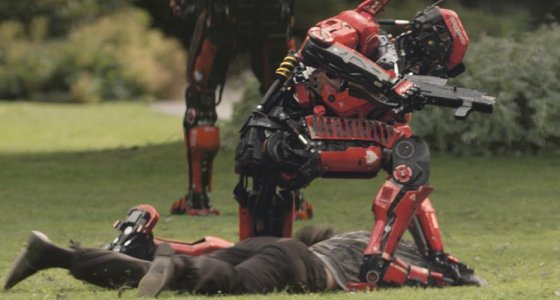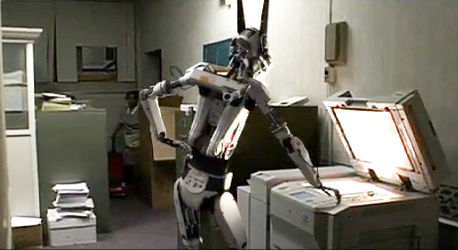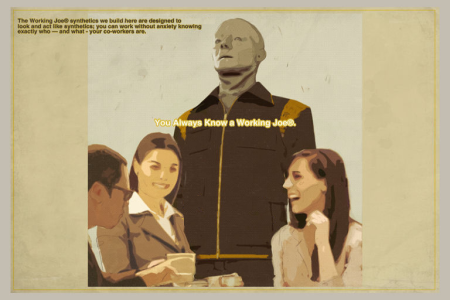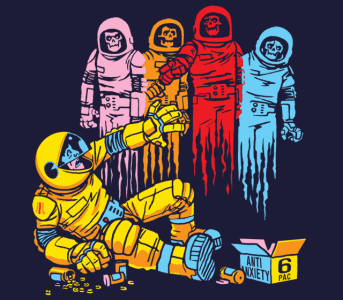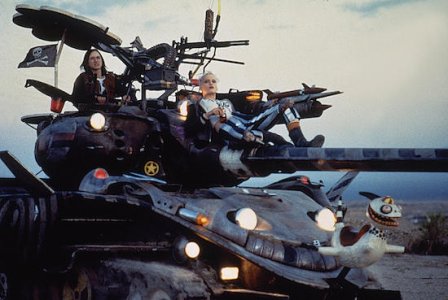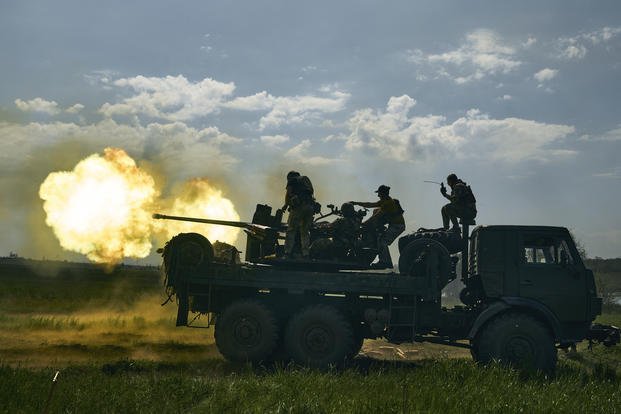Vehicle Chassis: Combot (Walker)

Even after decades of robotic proliferation, the United Nations continued to shy away from adopting such weapons for its own security forces. Partly this was motivated by its focus on sublethals and commando forces skilled in their use. Another was the inherent political difficulties and ethical dilemmas - absent AGI, no software system was free of flaw. Even a drone spraying tear gas rounds could accidentally concuss civilians. In the face of such tragedy was the programmer at fault? The mechanical engineer who designed the firing apparatus? With platforms powered by adaptive learning and long ponder, should the software breeder be held liable? With remote operated drones, would the pilot be put on trial, or the multiple layers of military officers, civilian commanders, and, often, law enforcement officials who signed off on the approval in shared responsibility? Which system is to blame? The war machine or the war
machine?
The 21st-century saw unparalleled use of a new form of militarized drone: humanoid weapons platforms. The public was entranced by clanking combatant ’bots carrying out their orders with true mechanical perfection. As these clockwork machina marched forth, burning villages without moral compunction or fear, atrocities mounted. In response, the U.N. flailed about uselessly with nonbinding resolutions even as each permanent member of its Security Council freely used servomotor servitors in wars and police actions.

However, during one of the last cycles of the construction of the UNS
Unity, dubbed the season of “Open for Business” when multinationals temporarily became the project's driving force, amoral gigacorporate boards decided there should be no opposition to cost-effective solutions. Even as the U.N. with its Byzantine bureaucracy and innumerable NGOs squabbled in the wake of American departure from mission leadership, the boards elected ARC founder Oscar van de Graaf as their CEO of CEOs, the Director-in-Chief of the corporate junta that was the
Unity Mission Industry Standards Board. Van de Graaf’s opening remark was, “Screw it, just get it done.” While
Unity was Open for Business, that slogan was law.
The case for incorporating militarized machines was simple. It was already known that Chiron hosted alien life, some of quite considerable size and unknown temperament. Better to bring along soldiers not limited by such petty concerns as breathing to defend frail human colonists. Robotic platforms also had plenty of general-use applications. Tireless and complaintless, they were considered a boon for working in vacuum and other hostile environments. And so, in addition to General Atomics Corporation and American Machines, two more vendors signed up to provision the mission with robots.
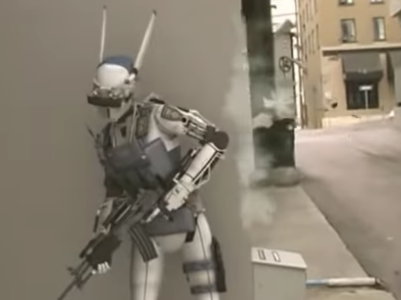 A D-9 Volker SAP patrol unit under fire from uMkhonto we Sizwe resistance fighters in the streets of Durban
A D-9 Volker SAP patrol unit under fire from uMkhonto we Sizwe resistance fighters in the streets of Durban
Johannesburg-based robotics company Tetra Vaal notoriously served as chief supplier of law enforcement automatons throughout Africa. The D-9 Volker, its premier bipedal drone model, enabled authoritarian police departments and imperialistic governments alike. Boasting pinpoint sharpshooting skills, superhuman strength and agility, and data feeds compatible with any law enforcement intelligence system, they empowered regimes desiring tight order at minimal expense of their own human resources. Programmed with a wide variety of civilian interaction modes from Benevolent to Hostile, the Volkers were a common sight in the dense urban environments of the colonial empires, chasing perpetrators- whether criminal or dissident- through shantytowns with predator speed. For less than-megalopolis sized communities, even a single Volker was often sufficient to boost local police departments’ crimefighting abilities. Indeed, many organized criminal organizations turned to sophisticated guerrilla cyber-warfare in their fight against the
koperkêrels (Afrikaans for “copper police”), using homegrown ICE code and improvised EMP devices.
The militarized FC-3 Vaas variant, boasting more protective armor, greater higher firepower, and thousands of warfare routines in its onboard computer, was also a popular- and pricy- offering from Tetra Vaal. These walking weapons platforms proved to be force multipliers in the many colonial counterinsurgencies that swept the continent throughout the twenty-first century, most notably the Azanian Uprising.
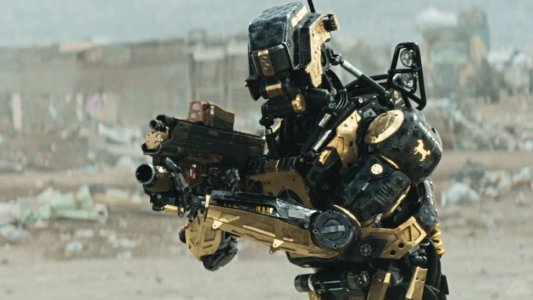
Tetra Vaal’s combat robots were interlinked with remote homebase operators who could review full imagery captured by the networked mobile platforms. While they did possess sophisticated tactical intelligence for use in policing or military situations, no authorized unit was given a personality of its own. In terms of Weapons Automation levels as determined by the Society of American Military Engineers, they were at level 6, considerably high, but lacking in any sort of simulated anthropomorphization common in personable artificial intelligence (P.A.I.) systems. For over a century, public imagination was titillated by the possibility of truly self-thinking machines and the Turing imitations that mimicked human behavior. Recognizing this popular fear of rampaging rogue robots, Tetra Vaal installed a digitally ergonomic portable interface layer running a militarily-hardened fork of TograOS on their Vaal platforms, allowing operators the ability to slave units to PDAs or TrueVu specs and assume direct control.
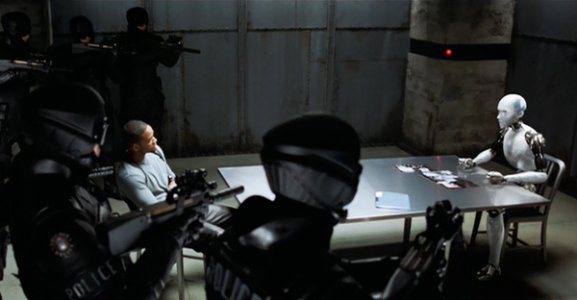 While robotic labor became normalized in American society, perpetual fears of mechanical revolution lingered. Here is the disproportionate police response to
While robotic labor became normalized in American society, perpetual fears of mechanical revolution lingered. Here is the disproportionate police response to SUN·E
, an American Machines household service unit suspected of homicide in 2040s Chicago. The machine was later acquitted
The addition of Tetra Vaal combots faced a different ethical challenge. Its prominent use by the South African apartheid government (not to mention formerly in Rhodesia and by Portuguese African colonial administrations, the Belgians, and the Pied Noir regime of Oranais) continued to be roundly condemned by the United Nations. More importantly, Morgan Industries founder and CEO Nwabudike Morgan, a key stakeholder of the
Unity Mission Industry Standards Board, presented sharp personal objections to Tetra Vaal’s inclusion. In a surprise break with his prior seclusion from public life, Morgan appeared before the press to denounce TV and all of its works. In an uncharacteristic turn from his normally jovial public persona, Morgan thundered against “profiteers of oppression enabling small-minded bigots.” He spoke passionately at length about his own experiences struggling against the open prejudice he faced while visiting South Africa as a youth, of being watched over by machines of merciless hate in the streets of Cape Town, of seeing Black and Coloured people marched away by early-gen combots to containment communities behind barbed wire. Morgan concluded that bringing such machines would “forever stain the stars with human hatred.”

Tetra Vaal CEO Joshua Abdon Haldeman fiercely contested the accusations. Declaring that his company held no allegiance to any particular government or ethnicity but to the entire public at large, he swore up and down that “not a single line of prejudice” had been written into his machines. His words failed to convince the masses of public admirers who sympathized- and sided- with Morgan. Facing a public relations storm unlike any before, the company opened itself for examination, permitting auditors from the ISB to examine the source code. The U.N. dispatched fact-finders and data librarians to dive deep into the computerized corpus, and even sent code breeders to examine the self-evolving neural networks itself. Months later, the Boraine Report determined that the Tetra Vaal codebase did not classify human visual data sets according to race, or even specific ethnicity. Rather, the machines had gone even further; with all of the mobile surveillance video footage collected by patrolling Volkers, as well as data provided by the national South African Police Service, the company had essentially mapped out the probable identity of any individual its police units came across. Tens of millions throughout the country- and hundreds of millions more throughout Africa- were subject to intrusive observation by the company and its governmental clients.
Despite the bombshell, Haldeman treated the report as an exoneration. And indeed, many casual observers in the public were content by the fact that Tetra Vaal was indiscriminate in its persecution of the law. Even so, in the face of threats from Morgan to launch a series of class-action suits on behalf of every citizen living under combot-patrolled territories, the ISB had to act to prevent the
Unity project from cracking even further. Thus, they arbitrated a deal: the Tetra Vaal combots provided for the expedition would have all individual-identification capabilities stripped from their codebanks. Furthermore, despite being awarded a lucrative contract to supply mere hundreds of walkers in exchange for brand visibility at a global level, leading to untold future market expansion opportunities, Tetra Vaal would be consigned to be a junior non-voting member of the ISB. Finally, to assuage Nwabudike Morgan from further personal opposition, Morgan Industries had its contract expanded to provide even more resources and personnel to the
Unity project, at a level that nearly rivaled Director-in-Chief van de Graaf’s own ARC contingent.
All were satisfied by this. Tetra Vaal and Haldeman were glad to be rid of the entire imbroglio. The U.N. felt it had dealt a modest blow against both invasive software and violent hardware, even if it was mostly ceremonial. The ISB was glad that the project could get moving again, though DIC van de Graaf warily eyed the Morgan expansion. Morgan Industries and its SafeHaven parent company proclaimed that this was “one more step towards peace in our space.” And returning to his post-public life seclusion, Morgan smiled as he prepared for offworld travel.
CEO Nwabudike Morgan said:
A skilled negotiator is not above the use of unhappy emotion, strong language, or moral outrage. Business negotiations can tell stories as personal as any parable, and a true businessman crafts narratives as adeptly as the most overwrought thespian. When your opposite number feels your anguish, he begins to see you as a brother. Even the most savage lion becomes an injured housecat worth soothing when it shows you the thorn in its paw. -Empathy, the Weapons Manual
Notes:
Tetra Vaal is from Neill Blomkamp’s
titular short film, the
Tempbot short film, and
Chappie.
The original
Joshua Haldeman was the research director of Canada’s branch of the
Technocracy movement from 1936 to 1941. He later moved to South Africa. He is also the grandfather of Elon Musk. Long story.
Abdon was the Biblical judge of Israel who succeeded
Elon. His name means “servile” or “service”, which perhaps fits a passage about robots.
Alex Boraine was one of the main architects of South Africa’s Truth and Reconciliation Commission.
Image Credits
Details of police robot is from
Chappie concept art by Christian Peace
Footage of police robot is from
Tetra Vaal
Militarized robot is from
Elysium
Robot under police interrogation is from
I, Robot